![]()
|
Keeling
& Co |
Location and period of operation:
|
Keeling
& Co |
Burslem |
1886 |
1936 |
Earthenware and blue printed ware manufacturer at the Dale Hall Works, Longport, Burslem, Stoke-on-Trent, England
|
Previously: James Gildea
Subsequently: Dunn Bennett & Co
London Gazette
May 17 1892
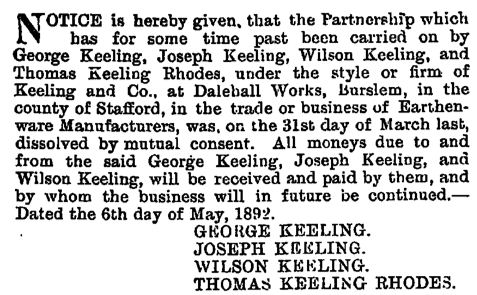
notice that
Thomas Keeling Rhodes retired from
the business of Keeling & Co in March 1892
|
Removal Notice the Low Solubility Glaze
on this Ware contains less than ONE PER CENT. The Pottery Gazette, 1 February 1912 |
"Keeling & Co., Ltd., earthenware manufacturers, Dale Hall Works, Burslem, have recently removed their London sample rooms from 4, Thavies-inn, to 22, Hatton-garden , E.C. They have now much larger, lighter, and in other respects more convenient premises. They are making such a display of toilet ware, dinner ware, vases, and suite ware that would not have been possible in Thavies-inn. The business was established in 1790, and has had varying fortunes. After a period of great success it passed through the hands of proprietors who allowed it to degenerate. It is now the property of a limited liability company, and within a comparatively short period new life has been infused into it. Dale Hall pottery has always been noted for the artistic character of its productions, a feature that has never been more pronounced than in the productions of the present proprietors. Mr. Rhodes, one of the directors, divides his attention between the works and the London office. I met him at the new rooms in Hatton- garden and was able to congratulate him upon the decided improvement in their London quarters. I found that it was in accordance with the marked improvement in, and extension of, their trade. There is no doubt that it had become imperative that they should have more room in London to show the numerous samples of their "Losol" ware, the distinctive name they have given their earthenware productions. The glaze they use contains less than 1 per cent, of soluble lead and is harmless to the workers. As they found they could work with this "low solubility glaze", they announce the fact by calling their ware "Losol," a contraction of the words "low solubility." The samples they show have a good hard body and a china-like surface. They have a large collection of samples of toilet ware — up to date in form and ornamentation. They show a number of nicely modelled ewers and basins in many attractive decorations. The same remark applies to the samples of dinner ware. Modern tastes are well catered for, and round, oval and square vegetable dishes are tastefully decorated. Several quite new ranges of suite ware are shown in various colour treatments. There are some
new forms and decorations in vases: an especially successful decoration in dark blue is one of the best. The collection of samples of flower pots include many quite original shapes."
NOTE: the article states that "The business was established in 1790" - this refers back to the date the works were first built by Joseph Stubbs and has nothing to do with Keeling & Co which started in 1886. |
|
Examples of Keeling & Co ware: "Keeling & Co produced mainly transfer printed domestic ware.. produced in typical 'eastern' patterns such as Asiatic Pheasants." The 'Losol' name was introduced in 1912. Many of the patterns, under the influence of designer Charles Wright (formerly a designer for C. T. Maling & Sons Ltd of Newcastle-upon-Tyne) were brightly decorated earthenware in abstract floral and fruit patterns associated with the art deco period. |
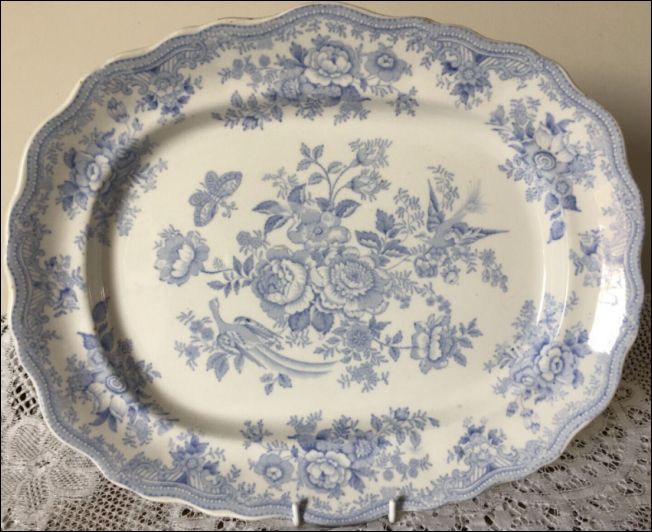 |
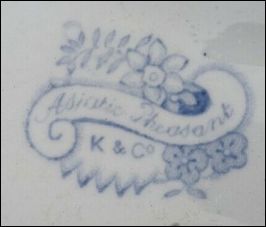 Asiatic Pheasant K & Co |
|
|
|

plate by Keeling &
Co
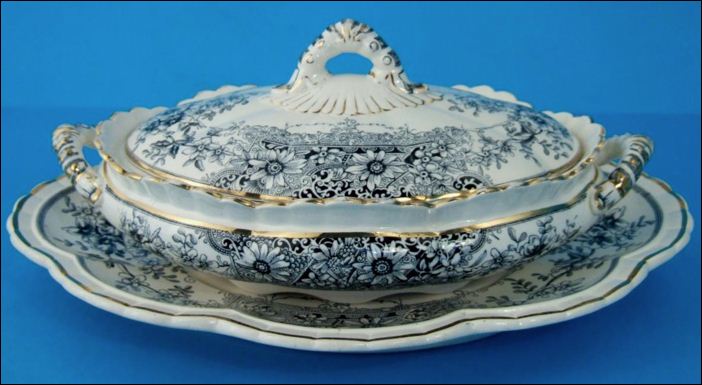 lidded tureen in the Stirling Pattern |
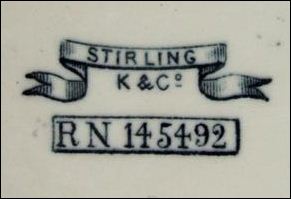
K & Co STIRLING is the pattern name
|
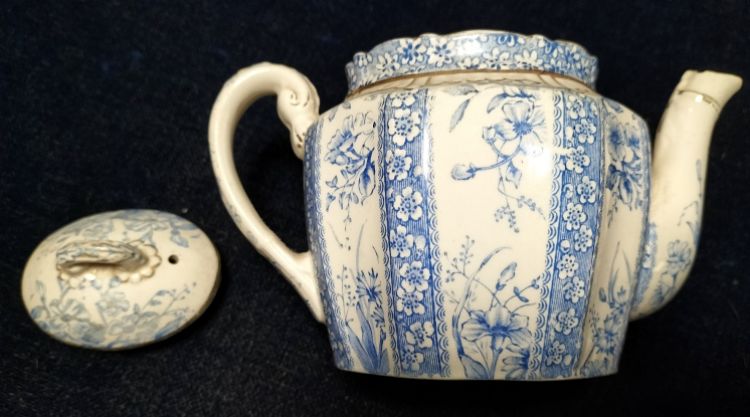 Brompton pattern - blue & white transfer printed
photos courtesy: Phillip Jackson |
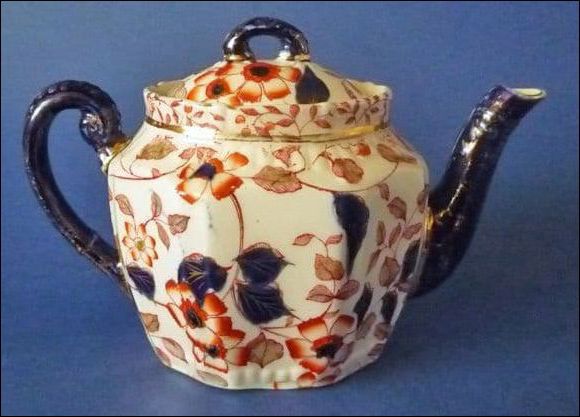 Daisy pattern - gaudy/chintz, hand painted in iron red, olive green and cobalt blue with gilt accents
picture acknowledgement: Premier Antiques |
|
Small, two cup teapots in different patterns using the same shape body. Along with the printed 'K & Co' mark there is a pad with an impressed number which is hard to read because of the heavy glaze. This is a design registration number - 187336 which shows that the shape was registered by Keeling & Co on the 5th February 1892. The style of the printed 'K & Co' was in use until around 1912. |
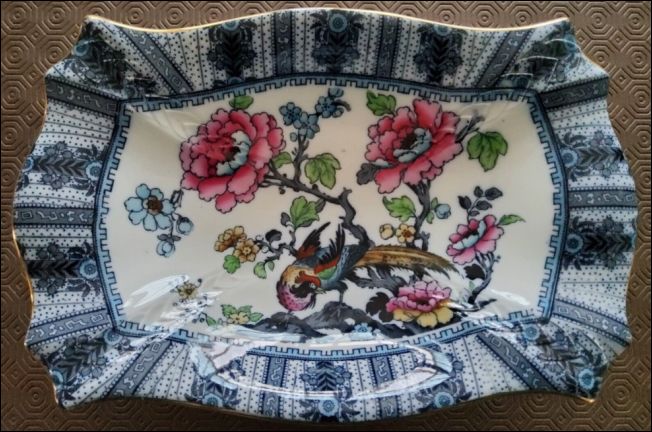 platter in the Shanghai pattern transfer ware printed with hand colouring |
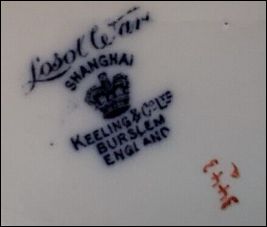 Losol Ware Shanghai Keeling & Co Ltd Burslem England c.1912-36 |
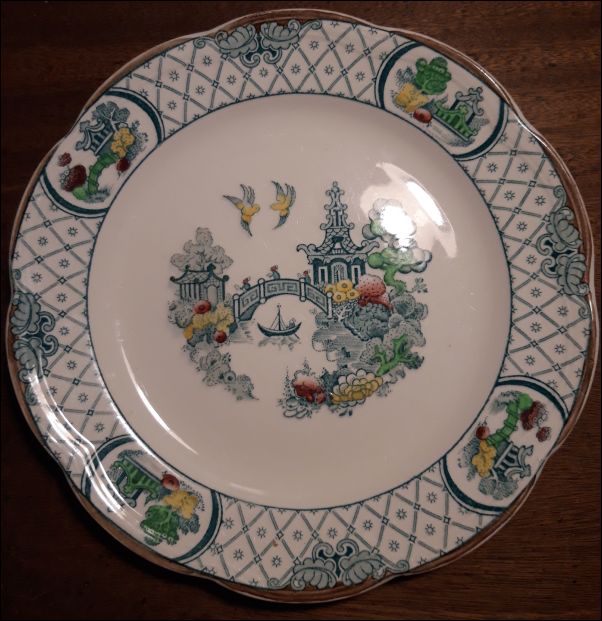 a reduced and simplified willow pattern designed to keep the tradition of the willow pattern with an appear to a more modern taste |
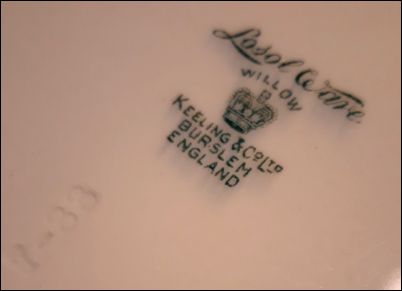 Losol Ware Willow Keeling & Co Ltd Burslem England this mark has an impressed month/year
of manufacture |
photos courtesy: Cathy Turner
Canteen ware produced for the British Government and Armed Forces
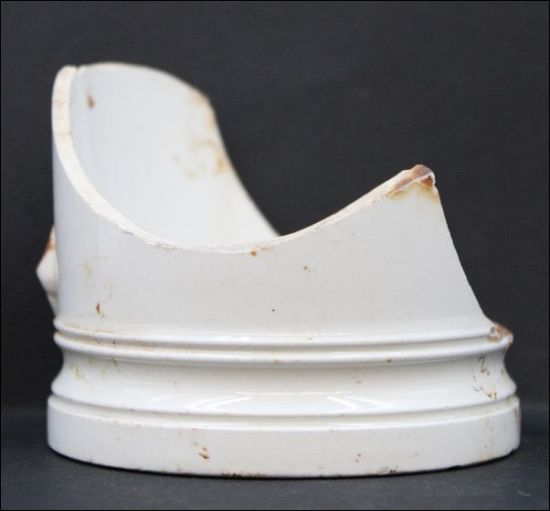 a jug or mug produced as canteen ware to the British Government - it was most likely marked with the Cypher of King George V
|
The ‘W’ within the diamond relates to the products being commissioned and produced for the Office of Works. This mark is there to distinguish the piece from being normal ‘utilitarian’ ware for public sale or belonging to any other organisation. - see other examples of marked canteen ware -
|
Initials & marks used on ware for identification:
"England" was generally added to marks after 1891 and "Ltd" may be added after 1909.
K & CO
K & CO
B
the letter 'B'
stands for Burslem
which is the pottery town where the
factory was situated
Trade marks include..
"LATE MAYERS", "LOSOL" and "LOSOL WARE"
the trade name Losol was introduced c.1912 onwards
|
Bates & Elliot first introduced this
kneeling nude potter
|
impressed K & Co with a manufacturing month/year - in this case 8/89 for August 1889 |
mark used 1909-1937
|
'kneeling potter' mark used 1886+
after 1891 usually has 'ENGLAND'
after 1909 often has 'LTD'
|
STIRLING is the pattern name
|
FLORA is the pattern name
|
c. 1886 - 1912
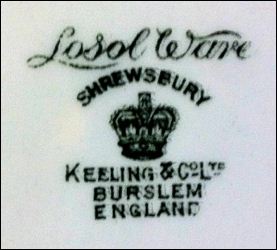
Losol Ware
KEELING & Co Ltd
BURSLEM
ENGLAND
mark used c.1912-36
- click for more on the Dale Hall Works -
Questions, comments, contributions? email: Steve Birks